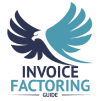
Effective business cash flow management is always essential, but it becomes much more critical when your company is experiencing a growth spurt or you’re actively trying to expand. With the right strategies, you can avoid cash flow shortages, minimize the need for extra cash, and seize opportunities. We’ll walk you through the basics and provide some business cash flow management tips on this page so that you can build not just a bigger company but a stronger one that stands the test of time.
What Is Cash Flow Management for Small Businesses?
Few people talk about business cash flow. Currently, 61 percent of small businesses struggle with it, per Intuit research. Poor cash flow management, or a poor understanding of how cash flow contributes to business, is also responsible for 82 percent of business failures, according to the National Federation of Independent Business (NFIB). Because of this, effective business cash flow management is always important, but growing businesses face additional challenges.
Cash Flow = Cash Inflows – Cash Outflows

At a basic level, cash flow is the measure of all the money flowing into your business, referred to as cash inflows, minus the money flowing out of your business, referred to as cash outflows.
Inflows include things like client payments and money earned from investments. They can also include tax refunds and loans. Outflows include business expenses such as rent, inventory, payroll, and debt payments.
The goal is to be cash flow positive on your balance sheets. That means you’re bringing in more than you’re spending. However, it’s normal to be negative if you make a large purchase, such as equipment or real estate. Equally, a sizeable positive balance on your cash flow statements isn’t ideal either. It means you’re not putting your money to use and may be limiting business growth.
Business Cash Flow Management Challenges Increase During Expansion
Growing businesses often have higher expenses in areas like marketing, which can present cash flow management challenges. However, it’s the shift in capital that becomes the biggest challenge. Growing companies must cover today’s higher costs with yesterday’s lower revenue. That means any increased costs related to things like inventory, fuel, and labor, or expenses that you must pay to fulfill the next customer order, have to be paid with money from a time of lower earnings. Larger businesses are in a better position to absorb these increased costs. Smaller ones have tighter margins, so it’s much more difficult to scale.
One way businesses can improve cash flow predictability and optimize their supply chain financing is by leveraging reverse factoring. Unlike traditional factoring, this method allows suppliers to receive early payments while buyers maintain favorable payment terms, creating a win-win for all parties involved.
Understanding Cash Flow Statements and Types of Cash Flow
A cash flow statement is a key financial report that shows how money moves in and out of your business. While an income statement reflects profitability, a cash flow statement shows how much cash your business actually has on hand during a specific period.
Positive cash flow means more cash is coming in than going out. Negative cash flow occurs when expenses exceed income. Maintaining a steady cash balance supports day-to-day operations and strengthens your ability to handle unexpected expenses, an essential part of effective cash flow planning.
There are three main types of cash flow reported on a standard cash flow statement: operating, investing, and financing activities. Operating cash flow reflects money generated from core business activities like sales and services. Investing cash flow tracks money spent or received from the purchase or sale of long-term assets, such as equipment or property. Financing cash flow includes loans received, debt repayments, and capital contributions.
Together, these three sections provide a complete view of your business’s financial health and are essential for accurate cash flow forecasting and long-term planning.
7 Business Cash Flow Management Tips to Help You Expand
Now that we’ve covered how business cash flow management differs during expansion, let’s look at some specific things you can do to alleviate the strain.
Tip 1: Forecast Net Cash Flow to Plan Ahead
Good business cash flow management begins with having realistic expectations about your company’s future cash levels. You can proactively make changes or secure a business loan to cover the difference if you can accurately predict when you’ll have cash shortages.
You may be able to get a financial statement that covers cash flow forecasting from your business accounting software. If you aren’t set up with this yet, create a spreadsheet that outlines all expected inflows and outflows for the next 30 to 90 days to get a clearer picture of what’s to come. Remember that a certain percentage of invoices will statistically become uncollectable, and build this into your model. If you have clients who habitually pay late, you’ll also want to preemptively mark their payments as coming in late on your spreadsheet.

Tip 2: Keep a Cash Reserve
Unexpected expenses can creep up at any time. Experts generally suggest that businesses keep an emergency fund of three to six months of expenses to cover these situations. That’s a large chunk of cash for a small business, and it can take months or years to set it all aside. Because of this, it’s unrealistic to expect to build a cash reserve all at once. Determine how much you can realistically afford to put into savings instead. Then, pay your savings account each cycle just like any other payable.
Tip 3: Streamline Operations for Efficiency
Look for ways to streamline operations or cut costs. For instance, you may be able to automate many repetitive processes. Although there’s often an upfront cost to procure software, your business can save money over time. Outsourcing is another option. For instance, you may be able to outsource your customer service, accounting, or marketing. Before you begin exploring options, see if any of your current vendors or service providers offer services that can help. For example, if you leverage invoice factoring, you may be able to outsource collections to the same company at no additional cost or very inexpensively.
Tip 4: Fix Invoicing Delays to Improve Your Cash Flow
A huge component of effective business cash flow management is ensuring payments come in promptly. Unfortunately, many businesses only invoice on a monthly basis, and late payments are all too common. Take a hard look at what’s happening with your invoices and how quickly they’re being paid, then address any trouble areas. Some invoicing best practices include:
- Bill clients immediately after work is complete or goods are delivered.
- Shorten the period of time clients have to pay.
- Incentivize early payments.
- Penalize late payments.
- Follow up promptly after a payment is missed to make payment arrangements or collect partial payment.
- Make it easier for clients to pay by digitizing the payment process and offering self-service tools.
Bear in mind that an invoice factoring company can address many of these things for you without impacting the customer. That way, it’s easy to deliver outstanding service and get paid in a timely manner.
Tip 5: Negotiate Better Terms with Suppliers
Vendors are often overlooked when it comes to business cash flow management, but they have a massive impact on outflows. Start by researching to see if you’re already paying competitive rates. If others are charging less for comparable goods or services, use this to negotiate better rates with your current suppliers.
It’s also worth asking if you can get more favorable payment terms. For instance, if your vendor expects immediate payment, see if they’re willing to wait a few weeks or months. This alone may create enough wiggle room in your budget to eliminate cash flow shortages.

Tip 6: Review Finances and Adjust Your Budget on a Regular Basis
Start with a detailed dive into your accounts to look for unnecessary expenses. Often, teams set up multiple subscriptions to the same service or forget to turn off subscriptions they no longer use, so this may need to be a group effort.
It’s also a good idea to look into operating expenses to see if there are more cost-effective ways to get things done. Certain costs will also increase over time. Make a note of hikes and increase budgets as needed.
Once you do this initial review, schedule another in six months to a year to ensure you’re not paying for things you don’t need and that your team has everything required to perform their jobs effectively.
Tip 7: Make Cash Flow More Predictable and Solve Gaps with Invoice Factoring
Invoice factoring is one of the best things you can add to your business cash flow management toolkit. With factoring, you sell your unpaid invoices to a factoring company at a discount. You get paid immediately, and the factoring company waits for payment from your B2B client. This makes your cash inflows more predictable. It can also help bridge cash flow gaps, so you don’t have to take on a loan or debt.
If your business is based in North Carolina, consider working with North Carolina factoring companies that understand the local business climate and can tailor cash flow solutions to help you maintain and avoid funding disruptions.
Improve Your Business Cash Flow Management with Factoring
Invoice factoring is flexible. You control which invoices you factor and when you factor them. This makes it ideal whether you want to start factoring right away or simply want to be prepared for any cash flow gaps down the line. Plus, most businesses qualify. If it sounds like factoring can help you manage cash flow better, start by requesting a complimentary quote.

About Invoice Factoring Guide
Related Articles
Get an instant funding estimate
Results are estimates based on the calculated rate and the total invoice amount provided.
Actual rates may vary.
Request a Factoring Rate Quote
PREFER TO TALK? Call us at 1-844-887-0300










